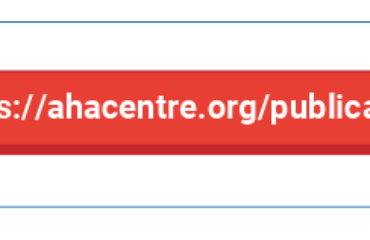
MS. ANTHEA WEBB
This month, The Column sat down with Ms. Anthea Webb, the Bangkok-based Deputy Regional Director of World Food Programme (WFP) for Asia and the Pacific, to learn about her experience in disaster management. Having built her career as a humanitarian for over 20 years, Anthea has been involved in numerous emergency responses across the world, such as in Kosovo, China, and Indonesia. Throughout her professional journey, she has witnessed the evolution of technology – and while this has significantly increased support emergency responses – she still maintains that the “natural alarm” forms our best warning system.
Anthea’s interest in humanitarian work developed from her university days in Australia, where she was involved in fundraising campaign to support the Cambodian refugees in early 1990s. From there she chose to “park” her journalism degree and volunteer in a social project supporting Vietnamese asylum seekers in Hong Kong. She then moved to work in the Vatican City, Rome, and then joined the World Food Programme in 1998. Anthea believes the initial challenges she experienced in the humanitarian field were overcome due to her natural passion for learning.
“Among the people I’ve been pleased to work with, there is a real drive to keep doing things better. Every emergency is different but often, some of the patterns are the same. Each time we intervene, we want to go faster, make the outcomes for the affected people better, do it at a lower cost in a way that leaves the organisation and the community stronger to face the next emergencies.”
Anthea also acknowledges the presence of natural hazards as a part of life. She states that while we may not be able to avoid droughts, floods, cyclones, and earthquakes, we can be prepared to respond to the impacts. The single question to reflect on is “How we can do it better?” Reviewing her past experiences, the mother-of-two highlights that a greater challenge than logistics occurs when different agencies do not incorporate their planning for disaster response. Anthea believes that groups like the AHA Centre can help overcome this issue and focus on getting people to work together.
“For me, one of the most interesting outcomes from the Sulawesi response was how much closer it brought us to the other humanitarian Country Team members. Being forced together like that is really important, and it is really important to continue that relationship. Exercises, simulations, joint-projects and missions help us to understand each other’s ways of working, motivation and goals,” she said.
Anthea keeps in mind that disasters can strike at any time and highlights the importance of technology in forecasting the impact of disastrous events. One of the innovations that Anthea co-initiated with Pulse Lab Jakarta (PLJ) is VAMPIRE, that stands for Vulnerability Analysis Monitoring Platform for the Impact of Regional Events. VAMPIRE integrates and promotes data innovation through visualisation of traceable drought impact on vulnerable populations.
“The project started in 2015 when the world – particularly Southeast Asia and Indonesia – was facing a very strong El Niño and its significant impacts. When we saw how large the impact might be, we realised we didn’t have a fast system for forecasting what a big drought would mean for rice and food production in Indonesia, as well as impact on farmers’ income. With PLJ, we developed a system that automatically catches available data, and automatically updates it, allowing us to spend our time on the analysis, and not waiting for the information itself. We were also able to integrate other related data, to support identification of areas most in need of government intervention.”
Following its successful adoption and use in Indonesia, similar forecasting methods as part of an early warning system are being piloted in other countries such as Cambodia, Myanmar, and Sri Lanka. While technology brings a lot of positives to emergency response, Anthea doesn’t forget her first deployment with WFP in Kosovo, when open-source online map and GPS were not widely available nor accessible. Relying on printed maps pinned all over the walls and floors – in the absence of desks – her team had to identify the correct sites to deliver relief items. She still admits that even the most sophisticated technology can fail us at times, and reminds us never to underestimate the value of original and hand-on techniques.
“In the context of a tsunami, the earthquake is the warning. That is the initial siren telling us to move to higher ground”, Anthea reminds us. “When hey sense danger, most people will act to protect themselves and family. Thus, it is important to get the message through to the people at risk”.
Written by : Shintya Kurniawan | Photo : Personal collection of Ms. Anthea Webb


